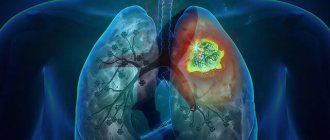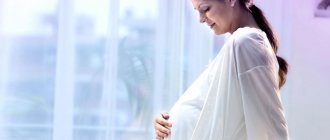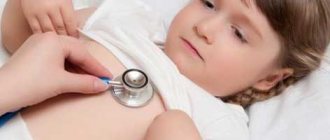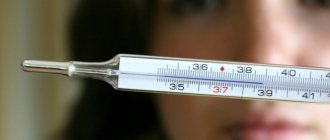Rehabilitation after pneumonia
Follow-up treatment for pneumonia after hospitalization at home Stages of rehabilitation Rehabilitation at home Balanced nutrition The most important factor in restoring immunity is adequate sleep Moderate physical activity Quitting smoking and alcohol Sanatorium Exercises for the lungs after pneumonia What vitamins to take after pneumonia Breathing exercises after pneumonia After pneumonia, how long does it take for the body to recover How long does it take for the lungs to recover after pneumonia? Do the lungs recover after pneumonia?
Follow-up treatment for pneumonia after hospitalization at home
Pneumonia or pneumonia is a disease that often needs to be treated in a hospital. According to the clinical recommendations set out in the letter of the Ministry of Health of the Russian Federation dated March 6, 2020 N 30-4/I2-2702 “On the algorithm for providing medical care to the adult population with community-acquired pneumonia,” the CURB-65 scale must be used to determine the choice of place of treatment.
The CURB-65 scale includes the analysis of five signs:
1) disturbance of consciousness caused by pneumonia,
2) increase in urea nitrogen level > 7 mmol/l,
3) tachypnea 30/min,
4) decrease in systolic blood pressure <90 mmHg. or diastolic 60 mm Hg,
5) the patient’s age is 65 years.
The presence of each characteristic is assessed as 1 point, the total amount can vary from 0 to 5 points.
Depending on the given indicators, the following CURB-65 groups are distinguished:
Group I (non-severe course, 0-1 points): outpatient treatment;
Group II (non-severe course, 2 points): preferably hospitalization or outpatient treatment with daily monitoring;
Group III (severe course, more than 3 points): emergency hospitalization.
Stages of rehabilitation
Depending on the severity of the disease, rehabilitation begins in a hospital setting. Early initiation of supportive effects on the body can reduce recovery time after pneumonia and speed up recovery. There are two stages in rehabilitation. The first lasts
from 3 to 14 days with positive dynamics against the background of antibiotic therapy.
This stage ends when body temperature normalizes, and X-ray diagnostics do not show signs of pneumonia. The second stage
includes the actual rehabilitation and consists of a special diet, taking vitamins, restoring electrolyte and microbiological balance, physiotherapy (electrophoresis and UHF irradiation), therapeutic and breathing exercises. This period lasts about three months and eliminates the effects of pneumonia. It restores the functions of the alveoli, the vital capacity of the lungs, and eliminates the side effects of antibiotic treatment. Rehabilitation is also aimed at eliminating the risk of long-term complications: post-pneumonic pneumofibrosis, lung cirrhosis, fibrous adhesions of the pleural layers.
General recovery rules include:
- compliance with the rest regime. After pneumonia, to accumulate strength and energy, a full 8-hour night sleep and sleep for 1-2 hours during the day are necessary;
- balanced diet. In the first months after suffering from pneumonia, it is recommended to include in the diet foods rich in protein, vitamins A, B, C and calcium, but it is better to reduce the amount of carbohydrates and table salt;
- regular ventilation of the premises every 2-3 hours to ensure the required level of oxygen supply to the premises and normalize the functioning of the respiratory system;
- inadmissibility of hypothermia and open drafts.
In addition to the general rules of rehabilitation after pneumonia, there are also special ones aimed at strengthening the respiratory system and bringing it into a state of full functioning. These include breathing training as a necessary way to quickly and safely restore the lungs after pneumonia and prevent the development of congestive processes in the respiratory organs.
Rehabilitation at home
When carrying out rehabilitation at home in the first days, efforts must be made to remove remaining sputum and mucus from the alveoli and bronchi and prevent the proliferation of connective tissue. Inhalations with essential oils of thyme, fir, and incense are suitable for this. If you have allergies and in the absence of these oils, you can use an inhalation solution of soda (40 g per liter of water), which has an expectorant effect.
Therapeutic exercises are very important when recovering from pneumonia. At the initial stage of rehabilitation, the patient performs breathing exercises, then physical exercises. It is usually recommended to perform two or three breathing exercises at the beginning of recovery and, if you have sufficient strength, add the same amount of physical exercises. Do the exercises twice a day.
On July 31, 2021, the Russian Ministry of Health issued guidelines for medical rehabilitation for a new coronavirus infection. They prescribe physical therapy exercises, indications for their implementation, level of load increase, and stages of physical recovery. Although the recommendations are written for medical personnel, anyone recovering from pneumonia can watch the sections related to gymnastics and perform the exercises. The recommendations formulate complexes of therapeutic exercises for patients with different levels of well-being. There are a lot of exercises, and everyone can choose for themselves.
If your health allows you to leave the house, if the weather is good, you need to walk in the fresh air. This will help oxygen enter the body. To restore normal intestinal microflora, probiotics are prescribed, and asparkam or panangin are prescribed to correct electrolyte balance.
restoring immunity after pneumonia is a complex task, and essentially the entire body must be restored.
Balanced diet
During the recovery period, it is advisable to avoid spicy and fried foods. They worsen the functioning of the gastrointestinal tract. It is recommended to consume fresh vegetables, berries and fruits, cereals (semolina, buckwheat, oatmeal), pasta, lean meat and fish. From dairy products - cottage cheese, yogurt, kefir, unsweetened yogurt. It is better to limit the amount of sugar. Allowed products include marshmallows, preserves, marmalade and honey. Be sure to drink at least 1.5 liters of water. It is better to replace coffee, soda, and strong tea with fruit drinks, compotes, and jelly. To enhance the effect of the prescribed treatment, take decoctions and infusions prepared on the basis of medicinal herbs.
The most important factor in restoring immunity is proper sleep.
Moreover, both night sleep (the slow-wave sleep phase should be at least 1 - 1.5 hours, checked using smart bracelet watches) and daytime sleep. During the day, 15-20 minutes of sleep after lunch is enough. In the evening you should go to bed no later than 22 hours. And be sure to ventilate the bedroom.
Moderate physical activity
Walking or swimming is best. At the same time, try to monitor your pulse; it should not increase by more than 20 beats per minute. If possible, you should walk/run in the fresh air. Make sure that your shoes and outerwear are appropriate for the season - not too hot and not too light. This is equally true for adults and children.
Quitting smoking and alcohol
The lungs are a natural target of tobacco smoke and one of the main organs that remove ethanol breakdown products from the body. Lungs weakened by disease are especially vulnerable to these damaging factors.
Sanatorium
To consolidate the positive effect after treatment of pneumonia, you can visit health resorts. The most popular are sanatoriums located in a pine forest, on the Black Sea coast, in Crimea. Recovery from illness should take place in the warm season. Rest is accompanied by physiotherapeutic procedures, including:
- chest massage;
- physiotherapy;
- microwave therapy;
- inhalations carried out using alkaline solutions;
- UHF;
- electrophoresis.
Pulmonary fibrosis
Unlike other previously known infections, the COVID-19 virus is capable of damaging the functionally active units of the lungs - the alveoli. Alveoli are small air bubbles in which blood is saturated with oxygen and transported to other organs and tissues. As a result of damage by the virus, the interalveolar septa either become inflamed or become thinner, and the patient’s body triggers a protective response, which leads to reversible or irreversible fibrosis (scarring) of the lung.
With fibrosis, due to the proliferation of connective tissue in the pulmonary alveoli, an adhesive process begins. From a physiological point of view, this mechanism is justified, since the body thus tries to isolate infected and inflamed areas of the lungs from healthy ones.
Small and isolated loci of fibrosis that could not be cured after the disease using conservative therapy methods, as a rule, do not have a significant impact on the patient’s quality of life. However, in cases of extensive diffuse fibrosis, which may be a consequence of extensive lung damage, there are many such adhesions and they can significantly reduce the functional volume of the lungs. As a result, after coronavirus, the patient experiences shortness of breath, coughing, and it becomes difficult to exercise and sometimes even walk.
It is a mistake to believe that pulmonary fibrosis develops immediately and will certainly remain for life. The adhesive process manifests itself within 2-3 months. In this regard, it is advisable to do a control CT scan of the lungs a month (preferably no later) from the onset of the disease to look for fibrotic changes, after which, under the supervision of a pulmonologist, undergo special anti-fibrotic therapy.
To prevent the development of persistent pulmonary fibrosis, patients are prescribed:
- Special drugs (longidaza, corticosteroids, bronchodilators, cytostatics);
- Ursodeoxycholic acid (as part of medications);
- Vitamins D, B6, E (in the absence of allergies or individual intolerances);
- Breathing exercises;
- exercise therapy;
- Physiotherapy.
Treatment is selected individually, based on the severity of fibrosis and the individual characteristics of the patient’s body.
Exercises for the lungs after pneumonia
Methodological recommendations of the Russian Ministry of Health prescribe the need for breathing exercises after pneumonia. The document establishes the norm of training at least 3-4 times a week, starting from 10 minutes, gradually increasing the load.
Even if you feel unwell, breathing and simple physical exercises can be performed while lying in bed. Each of them is aimed at restoring the respiratory muscles, strengthening the muscles that allow full inhalation and exhalation. It is important to get the lower parts of the lungs working. You can use yoga practices for this. The recommendations of the Ministry of Health provide for the practice of yogic breathing: both diaphragmatic and full.
Physical rehabilitation after pneumonia is not limited to breathing exercises; it is important to add physical activity. If you are very weak, you can do the exercises while lying in bed.
If the condition of the body allows you to get up, then you can start with vigorous walking, bending the torso, swinging your arms and other simple exercises. Many people use Nordic walking and gentle cycling.
Vibration massage is useful. It is performed by tapping your palms on the chest, stomach and back. Such pats are a good prevention of congestion in the lungs.
Physical therapy for pneumonia: drainage methods
Drainage restoration techniques involve facilitating expectoration of sputum and improving ventilation processes in the lungs. They prevent stagnation and the transition of inflammation to a chronic form. These methods must be combined with exercise therapy.
Postural drainage
Postural drainage involves the patient taking certain positions in which the removal of discharge from the bronchi to the outside significantly improves. Here are position options for postural drainage:
- Lying on your side on the side of the healthy lung.
- Lying on your back with your legs elevated and your lower torso at an angle of 20-45 degrees. To do this, place pillows, bolsters, and rolled blankets under your feet and back.
- Lying on your stomach with a cushion placed under the anterior abdominal wall.
- In a sitting position, the legs are pulled towards the chest, the body tilts slightly and the arms are extended forward.
Treatment by position is accompanied by stroking, light massage movements in the chest area. Before starting postural drainage, it is better to take expectorants to thin the mucus.
Percussion massage
Percussion massage consists of methodically tapping the chest with a hand folded in the form of a “bucket”. With this tapping, shocks are transmitted to the bronchial tree, which contribute to the release of mucus from the walls of large and small bronchi and its coughing. Percussion is carried out from the back and along the front surface of the chest.
The effect of percussion is enhanced by taking expectorants and when combined with a drainage position of the body. There should not be any pain during the procedure.
Important!
Percussion massage should not be performed in case of pulmonary bleeding, inflammation of the pleura, rib injuries and oncological processes.
Vibration massage
Vibromassage consists of specific vibration movements of the massage therapist’s palm or the use of electric vibrating massagers. Vibrating movements can be performed with the back or edge of the palm, fingers, or fist. First, massage the back wall of the chest, the interscapular area, then the lateral surfaces of the ribs, and the front of the chest.
In combination with positional treatment and percussion massage, vibration effects help to release mucus deposits on the walls of the bronchi and strengthen the respiratory muscles. The effectiveness of the procedure increases if it is performed by an experienced massage therapist: the frequency of vibration movements of the hand of such specialists can reach 200 per minute. It is also possible to use special devices with different attachments.
Cough help: an exercise to make coughing easier with pneumonia
When the cough reflex is weakened, it may be difficult for the patient to cough up discharge from the bronchial system, especially if it has a thick consistency. Prolonged stagnation of blood and sputum in the lungs contributes to the development of complications and the protracted course of the inflammatory process. Therefore, for patients who are weakened or have impaired consciousness, exercise therapy doctors have developed a special exercise that allows them to rid the airways of pathological contents.
- First, the patient is asked to cough, this is possible even with minimal preservation of the cough reflex.
- The patient then inhales deeply and the assistant vibrates the patient's chest for a few seconds.
- Then he sharply compresses the lower thoracic region, without stopping the vibration massage.
What vitamins to take after pneumonia
An important part of rehabilitation after pneumonia is providing the body with the necessary nutrients. For this, a special diet and vitamin complexes are recommended. Before starting the diet, you need to cleanse the intestines with any laxative in order to remove the effects of taking antibiotics and prepare the intestines for the restoration of microflora. Rehabilitation of pneumonia cannot be done without a special diet. The patient should eat high-calorie foods with a high protein content, drink plenty of warm liquids high in vitamin C, herbal tea, avoid fatty, spicy and salty foods, which cause redistribution of blood in the body, which can lead to worse healing of the lungs. It is worth limiting sugar and giving up “heavy” baked goods. It is good to drink warm milk with ghee - it is very useful for restoring the lungs. The diet should include broths, lean meat or fish, fermented milk products, vegetables and fruits, honey, and jam. Salt intake should be reduced to six to seven grams. To avoid overloading the digestive system, you need to eat five to six times a day in small portions.
Natural adaptogens can become an important part of rehabilitation measures. These are extracts of Eleutherococcus, Echinacea, tincture of ginseng and Schisandra chinensis; bee products. Non-specific resistance of the immune system will be increased by aloe extract and Biosed.
An important task in recovery from pneumonia is maintaining vitamin E levels in the body. Olive and sunflower oils, almonds, and avocados are rich in it. After severe pneumonia, an oil solution of the vitamin is administered by injection or taken in capsules.
It is important to remember that the choice of drug and its dosage should always be prescribed by a doctor. Any medication initiative taken by the patient can cause serious harm, even if it is “just vitamins.” It is the doctor who will prescribe the right combination of antioxidants, immunomodulators and vitamins, and create recommendations for complex treatment that will speed up recovery.
Isometric exercises
This term refers to contracting a specific muscle or group of muscles, overcoming slight resistance, and maintaining a tense position for some time. An example of such an exercise is holding a rubber band in a stretched state. Experts have developed exercises for different muscle groups and for different purposes. For example, to strengthen the lungs and prevent fluid stagnation in them, it is recommended to perform the following exercises:
- The patient must take a sitting position. The patient inhales, spreading his arms to the sides, holds his breath for a short time, and then brings his arms together as he exhales.
- As you inhale, the arms rise up, the breath is held for a short time, after which, as you exhale, the arms fall down.
The implementation of isothermal exercises and their list must be carefully agreed with the attending physician.
Breathing exercises after pneumonia
Unfortunately, breathing problems often persist in a patient with pneumonia longer than other symptoms of the disease and signs of debilitation. Shallow breathing, shortness of breath, and bouts of residual cough may accompany a person for several more months. In the case of severe pneumonia, recovery of the affected tissues takes a long period, and the lungs are unable to perform their functions fully for quite a long time. Shortness of breath is the first sign that the oxygen entering the body is not enough. Breathing exercises restore the volume of inhaled air, strengthen the respiratory muscles and significantly accelerate the recovery of the lungs.
It should be remembered that classical breathing exercises have several contraindications, including severe and chronic cardiovascular diseases, exhaustion of the body, mental pathologies, and high blood pressure.
For many patients, this becomes a serious limitation for rapid recovery from pneumonia; for them, sufficient oxygen supply to the body becomes a problem that they can solve for years.
In order to return your lungs to good shape quickly, even in the presence of complex chronic diseases, weakness and difficulty concentrating on performing exercises, you need to use breathing simulators. Doctors often recommend them, regretfully specifying that a breathing simulator is very effective, but very expensive.
In fact, the cost of a breathing simulator that will last for several years is comparable to taking a course of vitamins. Thus, the Samozdrav breathing simulator costs less than 2,000 rubles, and there are no contraindications or restrictions for its use during rehabilitation after pneumonia. It is effective for weakened patients on partial bed rest, for hypertensive patients, and for those who suffer from diabetes and experience dizziness when doing regular exercises.
A breathing machine is the best way to prepare yourself for more intensive rehabilitation that includes physical exercise. It helps supply the body with oxygen and ensures normal levels of carbon dioxide in the blood and tissues. Metabolic metabolism is restored at the cellular level, hemoglobin levels increase, and the airways are cleared.
It is important to remember that at the peak of the inflammatory process, in the acute phase of pneumonia, you cannot do breathing exercises. After acute symptoms are relieved, you can begin to breathe with the simulator, gradually increasing the load according to the manufacturer’s recommendations, which the patient receives free of charge when purchasing the simulator.
Changes in the lungs with coronavirus
Infection with a new strain of the SARS-CoV-2 virus causes an acute inflammatory process in the respiratory organs. The virus initially affects the upper respiratory tract, and then can penetrate the lungs and provoke the development of viral pneumonia. It, in turn, can be complicated by the addition of a secondary bacterial infection, which will lead to viral-bacterial pneumonia, which is treated more seriously, takes longer and is less tolerated by the body.
During coronavirus infection, the alveoli, which are the smallest lung structures, are most affected. They are shaped like bubbles and are responsible for gas exchange processes, i.e., the absorption of oxygen by the blood and its purification from carbon dioxide. The coronavirus destroys the walls of the alveoli, which leads to disruption of these processes, as well as the accumulation of inflammatory exudate in the alveoli.
This can lead to the replacement of affected areas with dense connective tissue that is not capable of stretching, which is called pulmonary fibrosis. In such situations, they will not be able to fully perform the respiratory function, and their vital volume will decrease, which, with extensive replacement of normal lung tissue, can even cause disability.
The hypoxia that occurs as a result of impaired gas exchange, i.e. oxygen starvation, negatively affects the functioning of the entire body, since all organs suffer from a lack of oxygen. In such situations, white spots become noticeable on CT or X-ray images, which is also called the ground glass effect. Subsequently, with the development of fibrosis, special darkening may be visualized in the images, indicating pneumofibrosis. Although such changes are characteristic not only of coronavirus infection, but also of other severe bacterial and viral pneumonias.
The development of pulmonary fibrosis leads to shortness of breath, especially after physical exertion, decreased performance up to disability, attacks of dizziness, dry cough, and chest pain. In severe cases, a person may not only lose the ability to work, but also to self-care. It is in order to avoid such undesirable consequences that recovery measures or rehabilitation after pneumonia and coronavirus are required.
How long does it take for the body to recover after pneumonia?
The recovery time for the body after pneumonia depends on many factors, including the severity of the disease, the age and health of the patient, his responsibility in applying rehabilitation measures, the availability of fresh air and good nutrition. On average, the period for restoration of the general condition of the body to good performance is from one to two months from the beginning of relief of the acute phase of the disease. But we can talk about complete recovery only after restoration of lung function, normalization of the respiratory cycle and the level of oxygen supply to tissues and cells. That is why the general period of rehabilitation after pneumonia lasts even after restoration of working capacity. The timing of complete recovery is individual and depends on the effectiveness of the treatment received and the attitude towards your body after the illness.
Prevention of contracting pneumonia
After pneumonia, it is especially important to prevent the development of a recurrent episode of the disease. To do this, it is necessary to eliminate all possible risk factors for pneumonia:
- lead a healthy lifestyle;
- provide adequate nutrition;
- maintain body weight within normal limits;
- monitor work and rest schedules;
- devote 7–8 hours of proper sleep every day;
- add regular physical activity to your daily routine;
- get rid of bad habits (primarily smoking);
- practice hardening methods;
- work with the reaction to stress;
- promptly treat respiratory infections.
Special control is necessary for people with chronic diseases of the respiratory system - bronchial asthma, chronic obstructive pulmonary disease (COPD).
Your doctor may recommend seasonal influenza vaccination; those who have not been vaccinated should receive a pneumococcal vaccination.
It is also necessary to follow all measures to prevent colds in order to prevent infection of the respiratory system (Fig. 8).
Figure 8. Prevention of ARVI. Source
How long does it take for the lungs to recover after pneumonia?
Most doctors agree that with good rehabilitation measures, the lungs are able to recover 3 months after pneumonia. Unfortunately, until this time there is often no talk of complete recovery. All this time, the patient may experience weakness, shortness of breath, and an increase in temperature to subfebrile levels. It is very important that the patient completes the entire range of rehabilitation measures, and then the chances of restoring the lungs faster are significantly increased. If you ignore doctors’ recommendations, recovery can take a long time and ultimately never be complete.
Other complications after coronavirus
Above we have listed the leading, most dangerous and common problems faced by patients who have suffered severe coronavirus. But other complications are associated with post-Covid syndrome:
- Pathologies of the central nervous system, cognitive impairment (caused by prolonged oxygen deprivation, direct viral damage, the formation of blood clots - the most severe complication is stroke);
- Consequences of long-term medication use (hormonal disorders, alopecia (hair loss), calcification at injection sites - visualized on CT);
- Decreased immunity;
- Deficiency of vitamins, minerals and nutrients (should be corrected with your doctor, since the consequences of improper recovery can be severe, especially for iron and calcium supplements);
- Weakness, asthenia;
- Decreased vision;
- Loss of smell, distortion of smells and tastes;
- Residual cough, shortness of breath (in the absence of fibrosis, it goes away on its own after 1-2 months).
The effect of coronavirus on the brain has not been sufficiently studied, and, fortunately, there are not as many complaints from patients with central nervous system disorders as complications directly on the lungs, blood vessels and heart.
Nevertheless, doctors warn not only about the risk of stroke due to blockage of cerebral vessels and circulatory disorders, but also about the possible acceleration of dementia and parkinsonism due to prolonged oxygen deprivation.
The “gold standard” of examination in this case is MRI of the brain. It is advisable to undergo the examination if the patient experiences dizziness, decreased cognitive function and memory, headaches, fainting, and episodes of “falling out” from reality.
In matters of treatment and rehabilitation of patients who have had a severe form of coronavirus, doctors are forced to constantly look for a compromise, in particular a compromise in the issues of prescribing potent drugs. Intoxication can be not only viral, but also drug-induced.
It is definitely worth noting that during the recovery period the patient is recommended to follow the intended therapeutic plan (depending on the consequences and diagnostic measures, it should be drawn up by doctors of several specializations) and not attempt self-medication, especially medication, since the risks of irreversible and dangerous complications are too great.
Do the lungs recover after pneumonia?
Doctors give an affirmative answer, focusing on the need for full therapy after the acute phase of the disease. Lung restoration is not a simple or rapid process. But the chances of returning your lungs to full health are quite high. Fibrosis often develops with pneumonia, but doctors say that cases of complete recovery of the lungs are possible even after 75–80% of the lung tissue has been affected. It is important to remember the importance of a positive psychological attitude, the desire to breathe fully and live the life of a healthy person. The patient must take care of himself, do breathing exercises, follow doctors’ orders and believe that he can recover.
Consequences of immobility for the patient
Paralysis of the patient can occur as a result of a stroke, spinal fracture, or other injuries and diseases. Immobility has a negative impact on literally all processes in the body; congestive pneumonia often develops, muscle atrophy, joints lose elasticity and mobility. In this case, there is only one way out - to help the patient move. Rehabilitation exercises should be carried out daily by a caring relative or nurse. The procedure must be agreed upon with the attending physician.
Active gymnastics
The list of exercises depends on the patient’s condition, type of injury and disease. Let's list the most popular:
- For the neck. Press the head to the chest, bend the neck, turn right and left.
- For hands. Flexion and extension of the fingers, movements of the elbow and wrist joints, raising and spreading the arms to the sides.
- For legs. Clenching and unclenching fingers, extending and moving feet, knees and hips.
- Prevention of thrombosis includes exercises such as “scissors” and “bicycle”.
- To prevent constipation, the patient should alternately inflate and retract the stomach in a position with bent knees.
Exercises have a positive effect not only on the physical, but also on the emotional state of the patient. This is a kind of way of communication between the patient and the person caring for him. Professional nurses advise carrying out gymnastic procedures in a good mood and ventilating the room where the patient is in advance. Charging should be carried out daily, taking into account the doctor’s instructions and the patient’s condition.
Full and shallow breathing
When breathing shallowly, only the upper part of the lungs is filled with air, and when exhaling, only the collarbones, ribs and collarbones work. This method is considered not very good, especially in yoga, since the breathing in this case will be of poor quality. The fact is that oxygen will not enter the alveoli and will not take part in the gas exchange that is beneficial for the body.
By breathing fully, the body receives maximum benefits. It involves the inclusion of the entire respiratory apparatus: lungs, respiratory tract, diaphragm, ribs, abdominal muscles, shoulder girdle. The process is soft and smooth, it happens like a wave, as follows:
- The stomach moves forward, the chest expands.
- The lower part of the lungs is filled with air first, and then the middle part.
- Then the collarbones rise, freeing up space in the upper lungs. The person sucks in his stomach and exhales.
Thanks to this method of breathing, metabolic processes are accelerated, toxins are actively removed from the body, its resistance increases, and a person gains confidence and calm. Thanks to deep, full breaths, complete ventilation of the lungs is achieved, the pulse rate slows down, blood pressure decreases, and digestive processes improve.
INDICATIONS
The timeliness and appropriateness of exercise therapy for pneumonia is determined only by a pulmonologist. The main goal of breathing exercises is not to harm, but to help cope with a number of unpleasant symptoms:
- dyspnea;
- shallow breathing, inability to take a deep breath;
- paroxysmal residual cough;
- difficulty in removing mucus.
All these signs are residual manifestations of the inflammatory process. They are the hardest to get rid of. As a rule, exercise therapy techniques are used after the end of intensive drug treatment.









